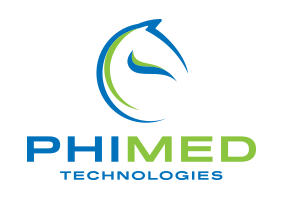
The rise of artificial intelligence in healthcare has sparked both curiosity and caution.
When it comes to revenue cycle management (RCM), AI on its own isn’t the whole story.
The future of financial health for provider groups depends just as much on human intelligence, experienced teams who know how to establish workflows, build repeatable processes, code accurately, and enforce checks and balances. It’s the balance between human expertise and robotic process automation (RPA) that is setting the stage for how RCM will evolve through 2026 and beyond.
For too long, these terms have been used interchangeably or viewed as separate solutions. In reality, their combined strength lies in how well they complement human expertise.
AI and RPA can analyze vast data sets, automate repetitive tasks, and predict potential disruptions, but it’s the human teams behind them who interpret insights, build workflows, and make strategic decisions. As workforce shortages persist and payer rules grow more complex, leaders must evaluate whether their current systems truly enable this partnership or simply add another layer of technology to manage.
The power of PhyGeneSys has the ability to extend teams. Our platform is designed to monitor data continuously, analyze patterns, and flag issues before they impact the bottom line. Whether it’s spotting a potential denial, flagging underpayments, or identifying which claims require immediate attention, the system equips billing and revenue teams with the insight to act faster and smarter.
These features don’t just improve day-to-day functions; they create a forward-looking approach to financial management. Instead of simply reacting to revenue problems, organizations can start predicting and preventing them.
That’s where the true shift is happening in RCM.
By 2026, the providers who thrive will be the ones using AI and RPA not as isolated tools, but as accelerators for informed human decision-making.
Comprehensive technology like PhyGeneSys brings clarity to where dollars are being lost and how to prioritize recovery. In an environment where workforce shortages have been consistently ranked the number one challenge, this kind of augmentation is necessary. Teams need systems that do the heavy lifting, so they can focus their expertise where it has the greatest financial impact.
AI in RCM is about giving healthcare leaders the visibility and foresight they need to make confident decisions.
When human intelligence and automation are fully integrated, providers unlock a future of stronger financial performance, streamlined workflows, and revenue operations that can keep pace with the changing healthcare ecosystem.
Questions to Guide Your 2026 RCM Strategy
As organizations look ahead, it’s time to evaluate how effectively your RCM process balances automation with human intelligence. Consider the following:
-
How does your current RCM system help your team identify and prevent denials before they occur?
-
Are you confident that underpayments are being flagged and recovered consistently?
-
What parts of your workflow are still manual that could benefit from RPA or automation?
-
With workforce shortages, how are you ensuring your team is focused on the highest-value tasks?
-
Do you have real-time visibility into which claims have the greatest impact on your bottom line?
The integration of AI, RPA, and human intelligence becomes your current competitive edge. As payer rules tighten and margins narrow, a strategic relationship between people and automation will be crucial.
PhyGeneSys exists to strengthen that relationship—empowering RCM teams with clarity, consistency, and control over every dollar in the revenue cycle.
Schedule a discovery call to learn more.



